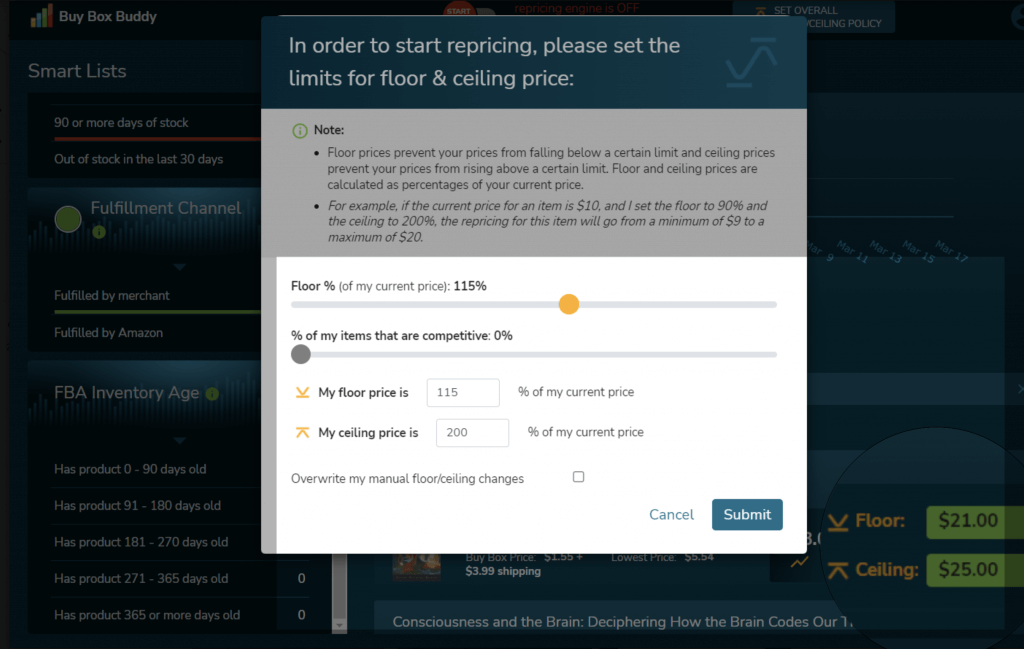Editor’s Note: Originally published on June 23, 2020, updated on Mar. 2, 2023.

You’re here to learn how to sell on Amazon in 2023. And we’re here to show you. But before we point you to the most important strategies and tactics, let’s go over some of the risks of selling on Amazon. Give this a quick read to learn about the top 7 Amazon seller risks and how to tackle them.
In the fifth installment of our series titled “How to Sell on Amazon in 2023”, we show you what to do after you’ve set up your account and drawn up your budget. That is, give some thought to the many risks of selling on Amazon. After all, nothing great comes without risk.
The 7 Most Serious Amazon Seller Risks
Slow Payouts
You’d be forgiven for thinking that Amazon pays sellers as soon as it charges customers. But if you sell on Amazon, a good chunk of your part of your earnings will always show up as Unavailable Balance. Here are the 4 main issues that can slow down disbursements from sellers:
- 3-Day Security Hold follows any change to your bank account information.
- DD+7 policy / EDD Reserve is a wait of 7 days from the max. EDD for payments to clear.
- Universal 14-day disbursement The name of the payment Amazon ma… More cycle (excl. 24-hour cycles for grandfathered accounts)
- Permanent Hold extends to 90 days or longer if your account is suspended, as explained here.
Obviously, not having access to your earnings right away affects your liquidity. This then affects your stock levels, your selling price, your sales, your growth, and your overall performance. Unfortunately, there are only 6 ways to deal with the payout delay, and they don’t all apply to every Amazon seller:
- Dispatch and confirm dispatch as soon as possible.
- Upload valid tracking numbers as soon as you have them.
- Set daily disbursements, if the option is available.
- Switch to FBA to avoid having too much money tied up with Amazon.
- Opt for faster delivery.
- Use an integrated carrier, so Amazon can use the actual delivery date for DD+7 calculations, rather than the max. EDD.
Hidden Costs
You could say that hidden costs are one of the biggest Amazon seller risks. Most MFN merchants think that Amazon fees make up the bulk of their costs. But while referral fees, closing fees, and unexpected shipping expenses amount to about a quarter of earnings, there are many other costs to consider.
Staying competitive on Amazon isn’t cheap. Running ads takes a big chunk out of profits – $381/day, on average. Then there’s winning the Buy Box. It’s the sine qua non of selling on Amazon in 2023. And it’s near impossible without an Emerald app like BuyBoxBuddy that keeps prices in check.
As for those who sign up to FBA, things like fulfillment and storage fees might not jack up their monthly bill. But overage fees, long-term storage fees, prep services, label, and refurbishing services can all add up. So too can return, disposal, and removal order fees for items Amazon deems unsellable.
Inventory Eligibility
Speaking of which, your inventory can become worthless overnight. It’s not just damaged, dangerous, or fake items that get snubbed, either. Amazon can impose selling restrictions on new, safe, and genuine branded items bought straight from the manufacturer. And ungating isn’t easy.
At the vendor’s request, Amazon can suspend listings or boot off sellers with no prior warning. Also, thanks to the Brand Registry, brand owners can take matters into their own hands, shutting down a seller’s entire operation and leaving them to cover FBA removal and other costly processes.
Account Suspensions
It’s not if but when. One of the most common risks of selling on Amazon is getting suspended just before the holiday season, Prime DayPrime Day was initially a one-day sales … More, or any other major sales event. No account means no sales. Worse still, Amazon can place a permanent hold on your funds.
Any Amazon seller risks having their account suspended, even if they did nothing wrong. Think hacked accounts, hijacked listings, fraudulent seller claims, and unfounded buyer complaints. Even words like “fake” in a buyer’s message can be picked up by a bot, triggering a suspension.
You have 17 days to file an appeal, but it can take longer than that to reinstate your selling privileges. And as for the usual 90-day hold on funds, it can take longer to clear, whether the account is reinstated or not. Meanwhile, expenses like FBA storage and overage fees can accrue.
In short, it’s anyone’s guess when your account will be suspended. But when it is, you’ll need to make some tough choices – and fast. If you want to get your account back, it always pays to get your appeal right the first time around. That’s why we recommend using a professional Account Rescue service.
Price Wars
On Amazon, profit beats turnover. That’s why top sellers use sophisticated repricing software to stay competitive. And when you outprice one competitor, you set off a chain reaction. Every competitor’s repricer wants to undercut you. Before you know it, your price spirals out of control.
Some merchants will enter this highly competitive selling environment unprepared. They get to learn how to sell on Amazon in 2023 the hard way. But if you use BuyBoxBuddy, you don’t need to risk it. Rather than watch your profits plummet trying to outsmart a competitor, you can focus on profits.
BuyBoxBuddy uses price limits as a fail-safe. So, you never risk selling for less. And certainly not at a loss. As seen below, you can set up your floor and ceiling prices in a flash, either as a fixed value or as a percentage of an existing value, so you can reprice faster and smarter than the competition.

Unfair Competition
One of the most serious risks of selling on Amazon is dealing with unfair competition. Retailers source their inventory from the same suppliers. And be it generic, PL, or own brand, the product isn’t really unique. So, from the moment they list, every Amazon seller risks stepping on someone’s toes.
But dishonest sellers often use black hat SEO tactics, aggressive pricing strategies, and unscrupulous upselling tactics. Some go so far as to hijack listings or hack accounts. The best way to fight a competitor who doesn’t play fair is to outsmart them with BuyBoxBuddy:
- Analyze your competitor’s price strategy by checking your Smart Lists and downloading data.
- Set ceiling prices for all the items you sell against a dishonest competitor.
- Check MSRPs and report sellers if they inflate them.
- Make sure your price reflects your stock levels and competitors don’t buy your last units.
- Wait until the competitor runs out of stock to add more units to your listing.
- Time your price changes so you’re likely to win the Buy BoxThis refers to the situation where a sel… More when buyers tend to shop more.
Competing with Amazon
Sellers sometimes forget that Amazon is not a single entity; it’s a trinity. Amazon is the market, the seller, and the buyer. And it can pull the rug out from under you anytime. Not just by suspending you, but also by doing what you do better and cheaper.
Our Brands @ Amazon.com have steadily taken over a huge share of the market. The AmazonBasics brand alone is known for everything from XBox controllers to pet beds. But there are now over 400 PL and Exclusive brands, all vying for a piece of the pie.
So, if you’re wondering how to sell on Amazon in 2023 and avoid losing your entire business to the single-most powerful competitor of all, we have only 3 pieces of advice to offer:
1. Maintain Your Own Website
At the risk of repeating ourselves, please don’t put all your eggs in one basket. Especially since you can make your webshop offers much more appealing than your Amazon listings, and buyers start to learn that Amazon isn’t always cheaper or faster.
2. Have a Unique Branded Item
Shopping habits are changing. But even with mobile checkout, people still crave an exciting shopping experience. An alluring logo, clever custom branding, space-saving packaging, fuss-free wrapping, and eco-friendly credentials can impress buyers and lower your risks of selling on Amazon.
3. Keep Up
Every Amazon seller risks missing their shot at success if they don’t stay up to date with the trends. To minimize the risks of selling on Amazon, read up on policies, join seller groups, sign up to newsletters, follow blogs like ours, and try brilliant repricing tools like BuyBoxBuddy.
Now that we’ve shared some of the most important risks of selling on Amazon, we can move on to strategies and tactics in our series, “How to Sell on Amazon in 2023”. Please stay tuned to find out how the best selling strategies can lower Amazon seller risks and turn potential growth to guaranteed success.

Melanie takes an active interest in all things Amazon. She keeps an eye on the latest developments and keeps Amazon sellers up to speed.






